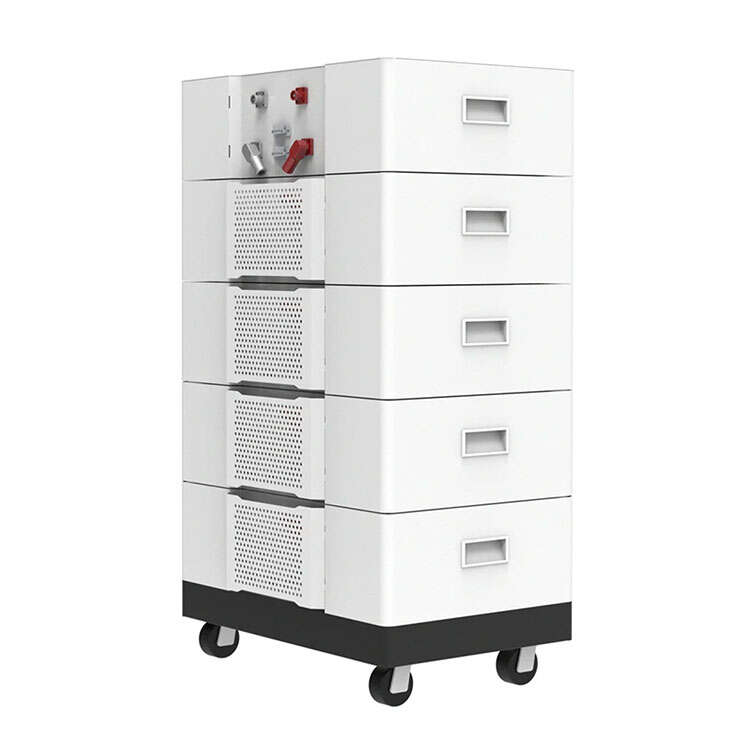Email format error
Email cannot be empty
Email already exists
6-20 characters(letters plus numbers only)
The password is inconsistent
Email format error
Email cannot be empty
Email does not exist
6-20 characters(letters plus numbers only)
The password is inconsistent


Battery Energy Storage System Manufacturer: Powering the Future of Sustainable Energy
In recent years, the demand for renewable energy has surged as the world shifts towards more sustainable and environmentally-friendly power sources. Central to this transition is the battery energy storage system manufacturer industry, which plays a crucial role in storing and managing renewable energy. These systems are vital in ensuring that energy produced by renewable sources, such as solar and wind, can be stored and utilized when needed, even when the sun isn't shining or the wind isn't blowing. As the world continues to adopt renewable energy, the role of battery energy storage systems will only become more important.
What is a Battery Energy Storage System?
A battery energy storage system (BESS) is a technology that allows energy to be stored in batteries and then released when required. These systems are essential for managing the variability of renewable energy sources. For instance, solar panels only generate electricity during the day, and wind turbines only produce power when the wind is blowing. By using a BESS, energy generated during peak production times can be stored and then used during periods of low generation or high demand.
Battery energy storage systems come in various forms and sizes, from small residential units to large-scale industrial installations. A leading battery energy storage system manufacturer typically offers a range of products designed to meet the needs of different applications, from home energy storage to grid-level energy management.
The Role of Battery Energy Storage System Manufacturers
Battery energy storage system manufacturers are at the forefront of the renewable energy revolution. They are responsible for designing, producing, and distributing the batteries that power these systems. These manufacturers invest heavily in research and development to improve the efficiency, capacity, and lifespan of their products, ensuring that they meet the ever-growing demand for reliable energy storage solutions.
One of the key advancements in recent years is the development of the 38.4kWh low-voltage stackable battery, a cutting-edge solution that offers enhanced flexibility and scalability for various energy storage applications. This type of battery allows users to easily expand their storage capacity by stacking additional units, making it an ideal choice for both residential and commercial installations.
Key Components of a Battery Energy Storage System
A typical battery energy storage system comprises several key components, each playing a crucial role in the system's overall functionality:
1. Battery Cells
The battery cells are the heart of any BESS. These cells store the electrical energy that can be later discharged to power homes, businesses, or even entire communities. Manufacturers typically use lithium-ion batteries due to their high energy density, long life, and low maintenance requirements. However, other types of batteries, such as flow batteries or lead-acid batteries, are also used in certain applications.
2. Battery Management System (BMS)
The Battery Management System is an integral part of any BESS. It monitors the health, charge, and discharge cycles of the battery cells, ensuring optimal performance and safety. The BMS protects the battery from overcharging, overheating, and deep discharging, which can significantly reduce the lifespan of the battery.
3. Inverter
The inverter is responsible for converting the DC (direct current) stored in the batteries into AC (alternating current), which is the form of electricity used by most household appliances and industrial machinery. High-quality inverters are essential for maintaining the efficiency and reliability of the energy storage system.
4. Energy Management System (EMS)
The Energy Management System controls the overall operation of the BESS, including when to charge and discharge the batteries. It ensures that the system operates efficiently and effectively, maximizing the use of stored energy and minimizing waste. The EMS can also integrate with other energy systems, such as solar panels or wind turbines, to optimize energy production and storage.
Benefits of Battery Energy Storage Systems
The adoption of battery energy storage systems offers numerous benefits, both for individual users and for the broader energy grid:
1. Energy Independence
By storing energy generated from renewable sources, homeowners and businesses can reduce their reliance on the grid, leading to greater energy independence. This is particularly beneficial in areas prone to power outages or where grid electricity is expensive.
2. Grid Stabilization
Battery energy storage systems play a crucial role in stabilizing the grid. They can absorb excess energy during periods of low demand and release it during peak demand times, helping to balance supply and demand. This not only ensures a more stable and reliable power supply but also reduces the need for costly grid upgrades.
3. Environmental Impact
BESS contributes to a reduction in carbon emissions by enabling the increased use of renewable energy. By storing excess renewable energy for later use, these systems help to reduce the reliance on fossil fuels, which are a major source of greenhouse gas emissions.
4. Cost Savings
For consumers, battery energy storage systems can lead to significant cost savings. By storing energy during off-peak times when electricity is cheaper, and using it during peak periods, users can reduce their energy bills. Additionally, many governments offer incentives and rebates for installing BESS, further reducing the cost of adoption.
Challenges Facing Battery Energy Storage System Manufacturers
Despite the numerous benefits, there are several challenges that battery energy storage system manufacturers must address:
1. Cost of Production
One of the biggest challenges facing manufacturers is the high cost of producing battery energy storage systems. While the cost of batteries has fallen significantly in recent years, it remains a significant barrier to widespread adoption, particularly for residential users. Manufacturers are continuously working to reduce costs through economies of scale, improved manufacturing processes, and advancements in battery technology.
2. Battery Lifespan and Degradation
Another challenge is the lifespan and degradation of batteries. Over time, all batteries degrade, leading to a reduction in capacity and efficiency. Manufacturers must invest in research and development to improve the lifespan of their batteries and develop systems that can manage and mitigate degradation.
3. Recycling and Disposal
As the adoption of battery energy storage systems increases, so does the need for effective recycling and disposal solutions. The environmental impact of disposing of old batteries is a growing concern, and manufacturers must develop sustainable solutions for recycling and disposing of used batteries.
4. Regulatory and Policy Issues
The regulatory environment surrounding battery energy storage systems is complex and varies by region. Manufacturers must navigate a range of regulations and policies related to safety, installation, and grid integration. Ensuring compliance with these regulations can be a significant challenge, particularly for manufacturers operating in multiple regions.
The Future of Battery Energy Storage Systems
The future of battery energy storage systems is bright, with significant advancements expected in the coming years. As technology continues to evolve, we can expect to see improvements in battery efficiency, capacity, and lifespan. Additionally, the cost of battery energy storage systems is expected to continue to fall, making them more accessible to a wider range of consumers.
One of the most exciting developments on the horizon is the integration of BESS with other emerging technologies, such as electric vehicles and smart grids. This integration will enable more efficient energy management and create new opportunities for consumers to participate in the energy market.
Moreover, the rise of decentralized energy systems, where individual homes and businesses generate and store their own energy, is likely to drive further demand for battery energy storage systems. This trend towards energy decentralization will not only empower consumers but also contribute to a more resilient and sustainable energy grid.
Conclusion: The Role of Battery Energy Storage System Manufacturers in a Sustainable Future
As the world moves towards a more sustainable future, the role of battery energy storage system manufacturers will be crucial. These manufacturers are at the forefront of the renewable energy revolution, providing the technology needed to store and manage energy from renewable sources. By overcoming the challenges and continuing to innovate, they will play a key role in ensuring that the world can transition to a cleaner, more sustainable energy future.
The development of advanced solutions like the 38.4kWh low-voltage stackable battery is just one example of how manufacturers are pushing the boundaries of what is possible. As technology continues to advance, and as more consumers and businesses adopt battery energy storage systems, we can look forward to a future where renewable energy is not only the primary source of power but also a reliable and cost-effective one.
